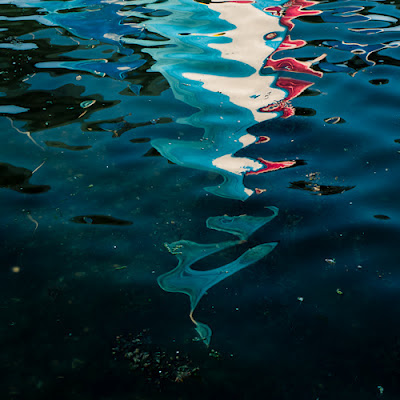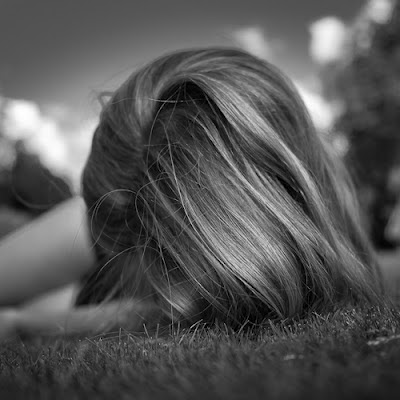You would think a visit to the exhibition of the finalists the biggest photo prize in biggest dedicated photo gallery in the capital would be impressive? Sadly not. Thought provoking? In the wrong way I’m afraid.
As I wrote on Friday, I was looking forward to seeing Rinko Kawauchi’s work in the flesh. The prints presented did look better than in her book Illuminance, but as with the book, it was a strange selection of prints, hung with no obvious narrative or sequence. The prints were shown in a wide variety of sizes, again seeming to lack any real logic about the choice of size. For example, one section of wall contained three huge square prints, about three to four feet wide. One was a picture of a tiny frog resting on a hand. Why so big? The image was over-blown, and looked soft at normal viewing distances. It is an intimate image, and works much better in the intimacy of a book.
On the other walls of the fifth floor gallery were the pictures of Agbogbloshie, an electrical dump in Ghana, recorded by Pieter Hugo. Set against the hellish, smoking wasteland, Hugo’s pictures painted a formal portrait of the inhabitants, human and animal. Some of the pictures were huge, and presented to an exemplary standard. To my eye, the pictures suffered from this formal distancing. They had a disaster chic that one might expect from a fashion magazine. But this stand-offishness, aloofness, is what big money competitions and galleries seem to expect these days. I wonder what Eugene Smith would have made of this location and story?
 |
| Where are the pictures? Christopher Williams' empty display |
Down one floor to the next gallery. Our first reaction was ‘Where are the pictures?’ In the interests of fairness, I presume, the Photographers Gallery had given each artist the same amount of wall space. Christopher Williams chose to display only three pictures and left acres of unused space. Two of these were large format images of photographic electrical equipment, shot in the manner of competent but dull trade advertisements. The other was a dull monochrome picture of a hay bale; Boring boring boring. I don’t really care if there was a concept behind these pictures; you could not get any sense of emotion or intellect from this ridiculous display.
Intellect and mischievousness were on display on the other walls of the fourth floor. John Stezaker is not a photographer, but takes existing photographs and modifies them in some way. His best work involves the overlay of usually only two images to create startling new composites. In his masks series he places old scenic postcards the faces of press release portraits, skilfully matching line and texture from both images. In his marriage series he boldly cuts two filmstar portraits creating new faces that are at the same time believable and unbelievable. This work is so clever, fresh and unique that I wanted to see more. All we got were a measly selection of four of these pictures. The vast majority of his display was a series, 3rd Person Archive, of small crops of old monochrome images. Smaller than postage stamps, they are, in effect, miniature telephoto pictures that have no engagement from the subject or the original photographer, and are at best, only mildly interesting. Stezaker was nominated for Deutsche Börse on the basis of last year’s exhibition at the Whitechapel Gallery, the catalogue of which I bought a copy of at the gallery bookshop. It is wonderful, and the DB exhibition is not representative of the work shown there.
I felt quite dejected when I left the Photographers Gallery. The best pictures, those of Stezakers, were not adequately represented. Kawauchi, my favourite photographer there, had not displayed her best work. Hugo’s pictures were steady but somewhat derivative and Williams’ stuff was quite frankly taking the Mickey. The gallery had not put on a good show. If this represents the best in contemporary photography then these are bad times for our art and craft.
The exhibition of the finalists in the 2012 Deutsche Börse Prize runs from 13th July to 9th September at the Photographers Gallery. At least it won’t cost you anything to visit.






















